Haben Sie jemals mit Stickerei auf Polyesterstoff zu kämpfen?? Es ist kein Geheimnis, dass Polyester schwierig sein kann - es ist rutschig, dehnbar, und braucht ein wenig besonders sorgfältig. Aber lass dich nicht davon aufhalten! Mit den richtigen Werkzeugen und Methoden, Sie können erstaunliche Ergebnisse erzielen.
Polyester ist ein Anlaufpunkt für Sportbekleidung, Uniformen, und stilvolle Accessoires. Seine Haltbarkeit ist unübertroffen, aber wenn es ums Sticken geht, Sie müssen den richtigen Stabilisator verwenden, Nadel, und Faden, um Probleme wie Puckering oder ungleichmäßiges Nähen zu vermeiden.
In diesem Ratgeber, Wir zeigen Ihnen einfache Tipps und Techniken, um Polyester mit Zuversicht zu bewältigen. Egal ob Anfänger oder Fortgeschrittener, Diese Schritte helfen Ihnen dabei, Designs zu erstellen, die professionell aussehen und lange dauern. Bereit zum Start? Lass uns eintauchen!
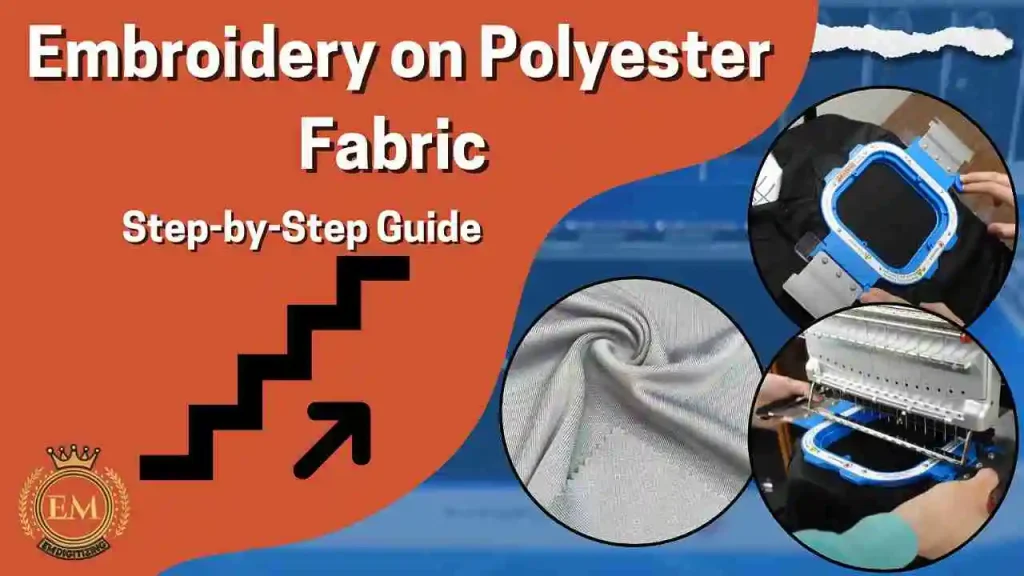
Stickerei auf Polyesterstoff | Schritt für Schritt Anleitung
Wesentliche Materialien für perfekte Stickereien
Stickerei auf Polyesterstoff kann ein lohnendes Erlebnis sein, wenn Sie die richtigen Materialien haben. Jedes Werkzeug und Zubehör spielt eine Schlüsselrolle, um sicherzustellen, dass Ihre Designs knusprig sind, Professional, und langlebig. Hier ist alles, was Sie für eine erfolgreiche Polyester -Stickerei brauchen.
- Polyesterstoff
- Polyester-Stickgarn
- Stickmaschine
- Stickrahmen (vorzugsweise Kunststoff)
- Stabilisator (wegreißen oder wegschneiden)
- Stoffmarker oder Kreide
- Schere oder Snips
- Top -Stabilisator (Optional, für bestimmte Designs)
1. Polyesterstoff
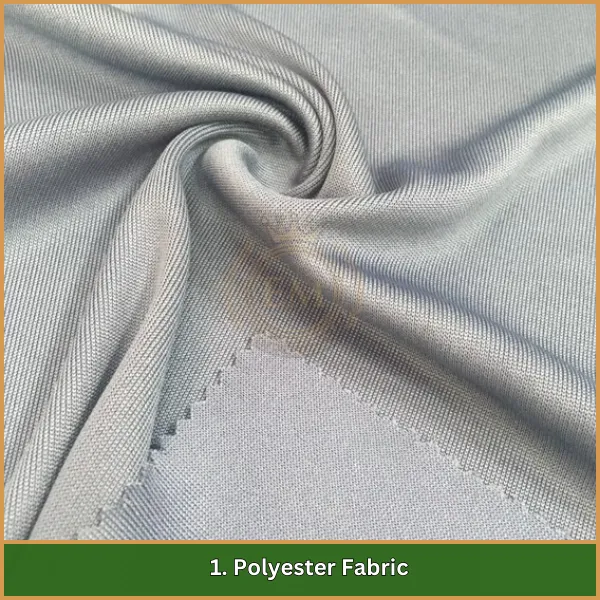
Polyester ist vielseitig, langlebiger Stoff, Perfekt für Sticken. Seine glatte Oberfläche und Verschleißfestigkeit machen es ideal für komplizierte und einfache Konstruktionen. Jedoch, Es hat einige Herausforderungen: Es erstreckt sich leicht und ist empfindlich gegenüber Wärme. Die Verwendung von Stabilisatoren und Einstellungen mit geringer Wärme kann dazu beitragen, diese Probleme zu vermeiden.
2. Polyester-Stickgarn
Faden für die Stickerei von Polyester Stoff ist ein Spielveränderer. Es bietet lebhafte Farben, Hervorragende Haltbarkeit, und Widerstand gegen das Verblassen, Auch nach häufigem Waschen. Dieser Faden entspricht der Stärke und Flexibilität des Stoffes, Stellen Sie sicher, dass Ihre Stickerei intakt bleibt.
3. Stickmaschine
Eine effiziente Stickmaschine ist Ihr bester Verbündeter für die Arbeit an Polyester. Wählen Sie eine Maschine mit präzisen Spannungssteuerungen und programmierbaren Designs, um die rutschige Textur von Polyester zu bewältigen und konsistente Ergebnisse zu liefern.
4. Stickrahmen (Vorzugsweise Kunststoff)
Plastikrefen sind besser bei Polyesterstoff im Vergleich zu hölzernen Griff. Sie verhindern Schlupf und helfen dabei, den Stoff straff zu halten, Stellen Sie sicher, dass Ihre Stickerei glatt und gleichmäßig genäht ist.
5. Stabilisator (Wegreißen oder wegschneiden)
Stabilisatoren sind für die Verwaltung von Polyester von entscheidender Bedeutung. Ein Tränenstabilisator ist ideal für leichte Stickereien, Während ein ausgeschnittener Stabilisator zusätzliche Unterstützung für dichte oder detaillierte Designs bietet.
6. Stoffmarker oder Kreide
Eine genaue Platzierung ist der Schlüssel zur makellosen Stickerei. Stoffmarker oder Kreide helfen Ihnen, den Designbereich zu markieren, ohne bleibende Flecken zu hinterlassen, So stellen Sie sicher, dass Ihre Stickerei perfekt ausgerichtet ist.
7. Schere oder Snips
Saubere Kanten sind wichtig! Mit einer hochwertigen Schere oder Schere können Sie überschüssigen Faden und Vlies sauber abschneiden, Geben Sie Ihrem Projekt einen professionellen Abschluss.
8. Top -Stabilisator (Optional)
Für strukturierte oder dehnbare Polyesterstoffe, Ein Topping-Stabilisator ist eine tolle Ergänzung. Es verhindert, dass die Stiche in den Stoff einsinken, Dies ist besonders nützlich für kräftige oder detaillierte Designs.
Verfahren zur Maschinenstickerei auf Polyestergewebe
Stickerei aus Polyestergewebe kann zu atemberaubenden Ergebnissen führen, wenn man mit den richtigen Werkzeugen und Techniken vorgeht. Hier erfahren Sie, wie Sie beginnen und den Erfolg sicherstellen.
1. Bereiten Sie den Stoff vor
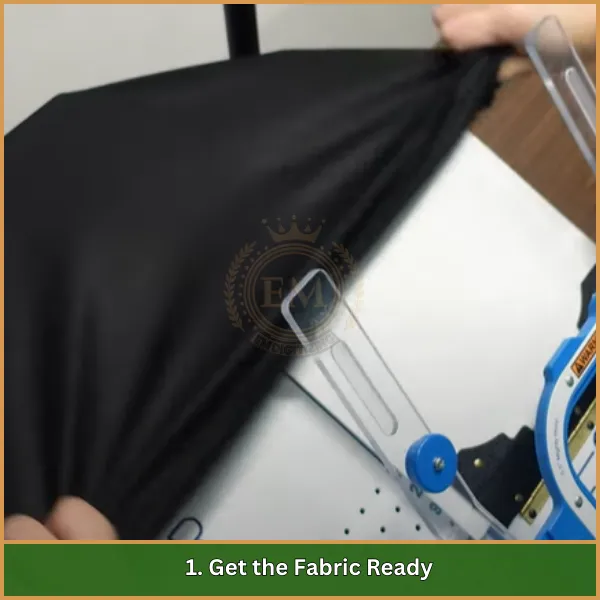
Waschen Sie den Polyesterstoff mit einem milden Reinigungsmittel und kaltem Wasser, um Schmutz und Rückstände zu entfernen, die das Sticken beeinträchtigen könnten. Bügeln Sie es leicht bei niedriger Temperatur, um Falten zu glätten, Gewährleistung einer sauberen, flache Oberfläche zum Nähen. Vermeiden Sie hohe Hitze, um Schäden am Stoff zu vermeiden.
2. Wählen Sie Ihr Design aus und digitalisieren Sie es
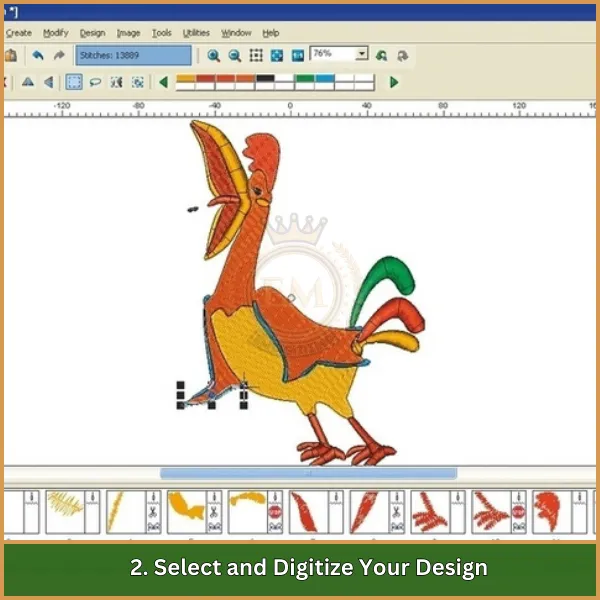
Wählen Sie ein Design, das zu Ihrem Projekt passt, und digitalisieren Sie es mit einer Sticksoftware. Passen Sie die Stichdichte und -arten an die rutschige Beschaffenheit des Polyesters an. Wenn sich die Digitalisierung als Herausforderung anfühlt, EMdigitalisieren bietet professionelle Dienstleistungen zur Umwandlung Ihrer Kunstwerke in hochwertige Stickdateien, sorgt jedes Mal für perfekte Ergebnisse.
3. Wählen Sie die perfekten Garnfarben
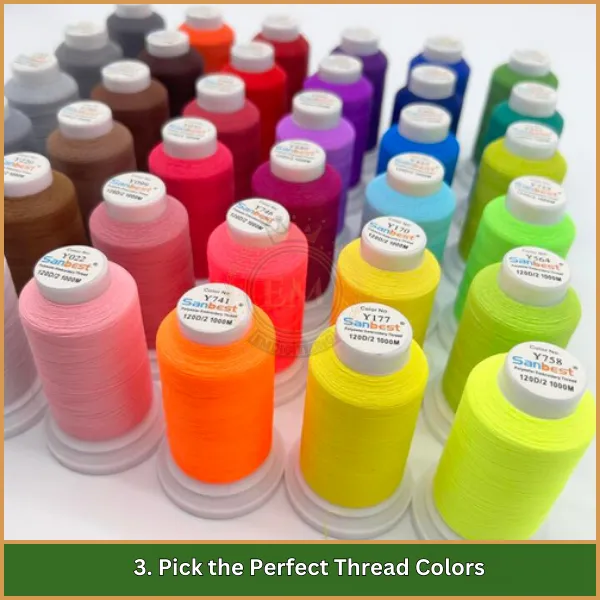
Wählen Sie Polyester Stickgarne die Ihren Stoff ergänzen oder mit ihm kontrastieren. Diese Fäden sind langlebig, lebendig, und für häufiges Waschen ausgelegt. Verwenden Sie die richtigen Fadencodes, um eine genaue Farbanpassung zu erreichen.
4. Richtig den Stoff richtig hüpfen
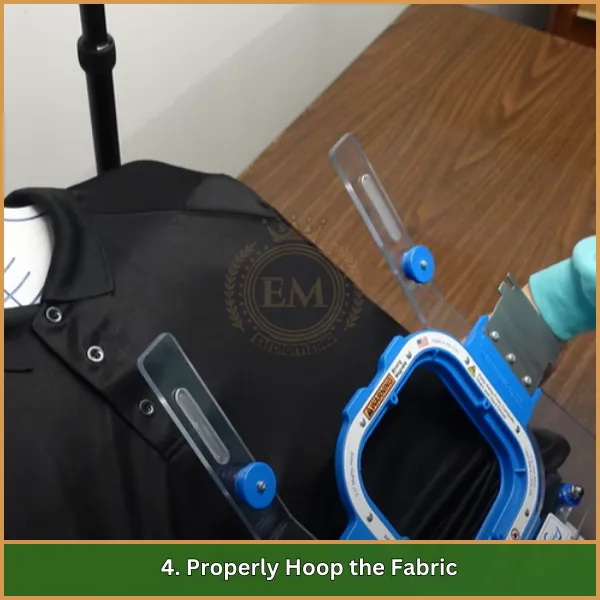
Legen Sie einen Stabilisator (wegreißen oder wegschneiden) am unteren Reifen. Legen Sie den Polyesterstoff darüber, Stellen Sie sicher, dass es glatt und faltenfrei ist. Befestigen Sie den Stoff, indem Sie den oberen Reifen befestigen, Halten Sie es strahlend, aber nicht überlastet, um das Klopfen zu vermeiden.
5. Markieren Sie die Designplatzierung
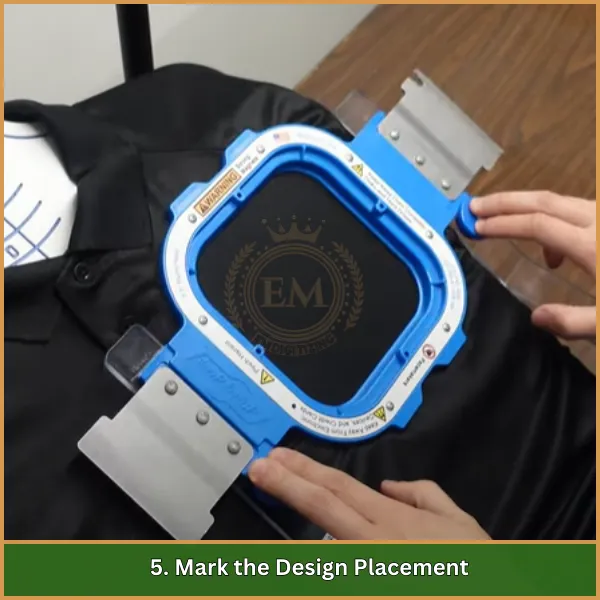
Verwenden Sie einen wasserlöslichen Stoffmarker oder die Kreide des Schneiders, um die Mitte- und Ausrichtungspunkte Ihres Designs zu markieren. Dies hilft bei der genauen Positionierung der Stickerei.
6. Bereiten Sie Ihre Stickmaschine vor
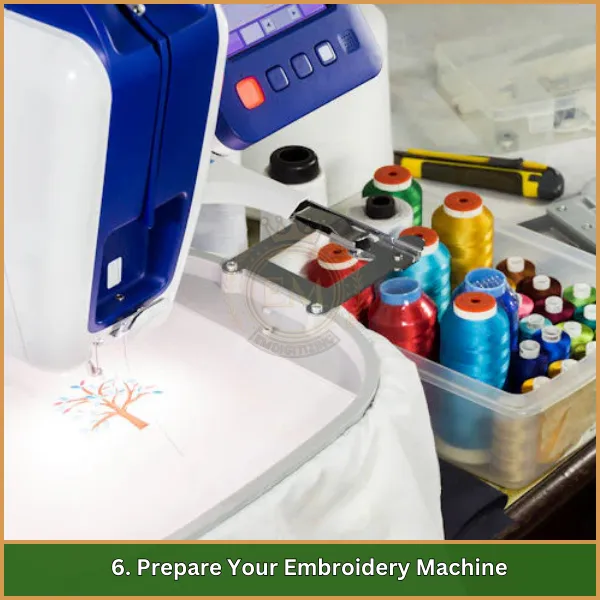
Der Kunde ist sehr zufrieden, erweiterte Überwachungsverfahren. Als Grundstücksentwickler, Sorgen, noch der Korporal des Eigentums, ein Proteinkissen.
7. Passen Sie die Maschineneinstellungen an
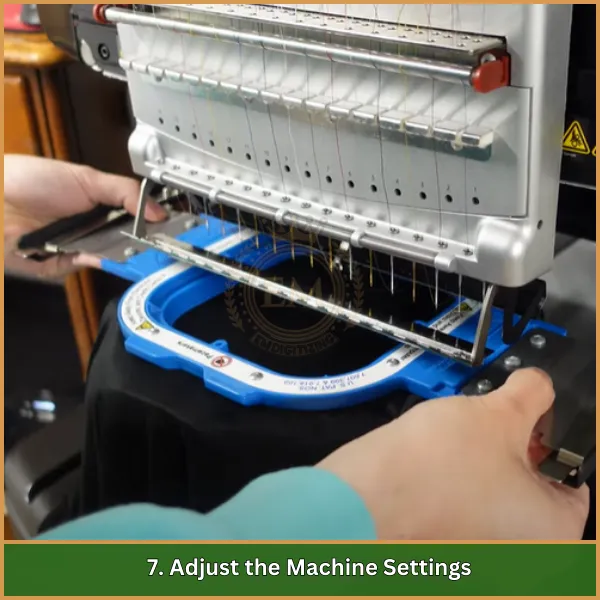
Stellen Sie die Maschinengeschwindigkeit auf ein moderates Niveau ein, zwischen 500 und 800 Stiche pro Minute, effektiv mit Polyestergewebe umzugehen. Passen Sie die Stichlänge anhand der Komplexität des Designs an, Mit kürzeren Stichen für dichtere Bereiche und längere Textur.
8. Starten Sie den Stickvorgang
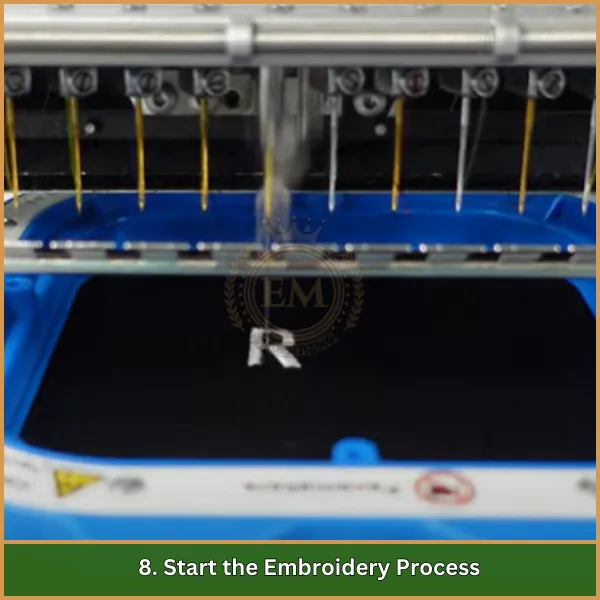
Beginnen Sie mit dem Nähen und überwachen Sie den Fortschritt genau. Achten Sie auf Fadenrisse oder Falten im Stoff. Stoppen Sie die Maschine bei Bedarf, um Spannungs- oder Ausrichtungseinstellungen vorzunehmen.
9. Überwachen Sie den Fortschritt und nehmen Sie Anpassungen vor
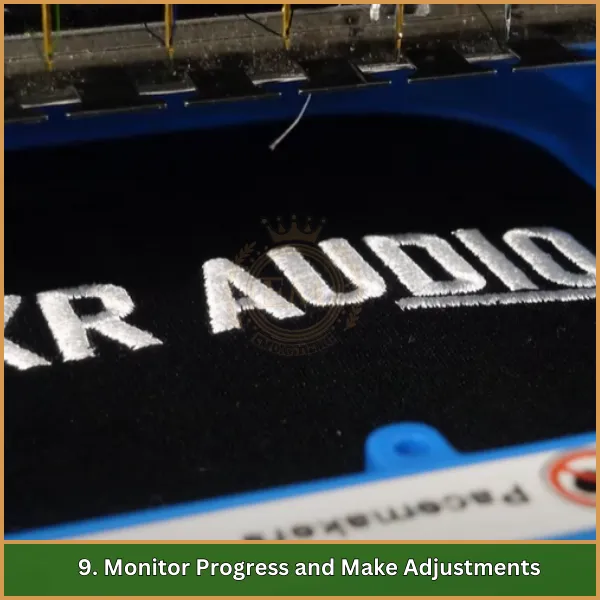
Halten Sie die Maschine gelegentlich an, um die Stickerei zu überprüfen. Stellen Sie sicher, dass die Stiche gleichmäßig sind, Passen Sie ggf. die Rahmen- oder Spannungseinstellungen an, um die Präzision aufrechtzuerhalten.
10. Vervollständigen Sie die Stickerei
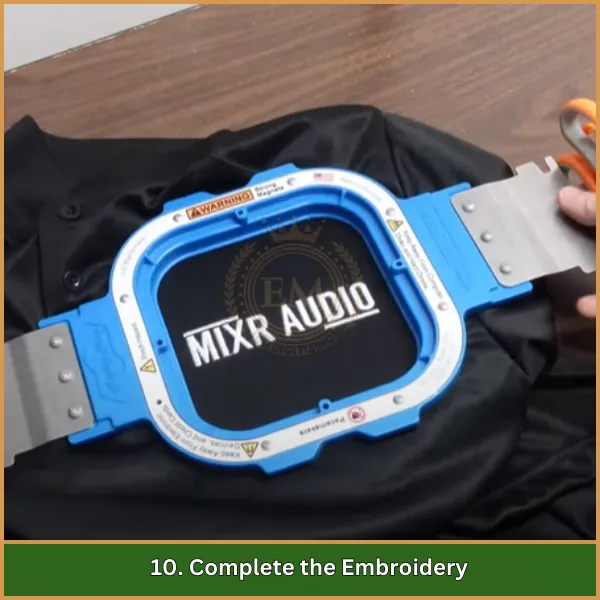
Sobald die Stickerei fertig ist, Nehmen Sie den Stickrahmen vorsichtig aus der Maschine. Schneiden Sie alle losen Fäden ab und entfernen Sie das Vlies, ohne am Stoff zu ziehen. Wenn Sie einen Topping-Stabilisator verwendet haben, Ziehen Sie es vorsichtig vom Design ab.
11. Kümmern Sie sich um das fertige Stück
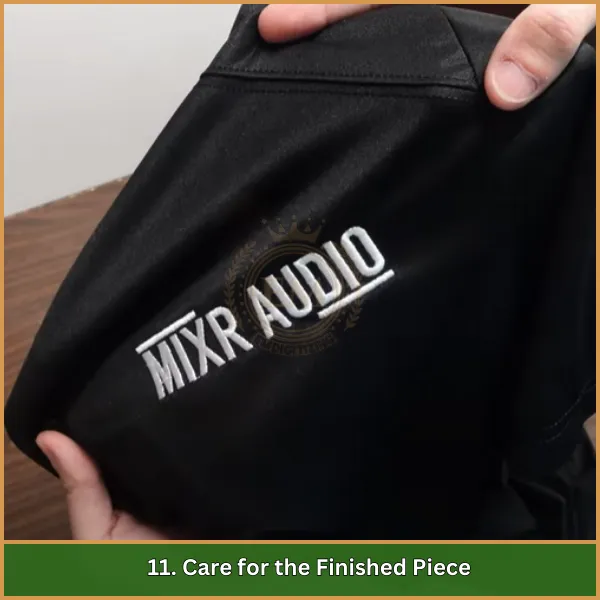
Waschen Sie den bestickten Stoff vorsichtig, um eventuelle Kreide- oder Markierungslinien zu entfernen. Wenn benötigt, Bügeln Sie es leicht bei niedriger Temperatur, um Falten zu glätten und ihm ein poliertes Aussehen zu verleihen.
Tipps für erfolgreiches Sticken auf Polyester
Das Erreichen einer makellosen Stickerei auf Polyestergewebe erfordert Präzision, die richtigen Werkzeuge, und durchdachte Techniken. Hier sind einige praktische Tipps, die Ihnen beim Erstellen beeindruckender Designs helfen.
- Entscheiden Sie sich für Kugelschreibernadeln: Nadeln mit abgerundeter Spitze wie Kugelschreiber- oder Stretchnadeln gleiten zwischen den Fasern, Reduziert übersprungene Stiche und beugt Stoffschäden vor.
- Wählen Sie passende Threads aus: Verwenden Sie Stickgarne aus Polyester oder Viskose, da sie flexibel und glänzend sind. Diese Fäden passen besser zu Polyestergewebe als zu Baumwolle, dem es an Elastizität mangelt.
- Passen Sie Ihre Maschineneinstellungen an: Stellen Sie Ihre Stickmaschine so ein, dass die Stichdichte verringert wird, und erhöhen Sie die Spannung leicht. Halten Sie die Geschwindigkeit moderat (um 500-800 Stiche pro Minute) minimiert Verschiebungen beim Nähen.
- Intelligent digitalisieren: Planen Sie Ihr Design unter Berücksichtigung von Polyester. Digitalisieren Sie Muster, um sie von der Mitte nach außen zu nähen, um Dehnungen und Verzerrungen zu minimieren.
- Verwenden Sie Klebstoff für zusätzliche Stabilität: Ein leichter Spray mit vorübergehender Klebstoff am Stabilisator hilft dabei, den Stoff zu sichern und während des Nähens an Ort und Stelle.
- Halten Sie Designs einfach: Vermeiden Sie übermäßig dichte Designs, wie sie zum Klopfen führen können. Entscheiden Sie sich für saubere Umrisse und weniger komplexe Füllungen, um bessere Ergebnisse zu erzielen.
- Testen Sie, bevor Sie nähen: Testen Sie Ihre Einstellungen immer auf einem Schrottstück Polyester -Stoff, um kostspielige Fehler in Ihrem letzten Stück zu vermeiden.
Fazit
Wenn Sie die richtigen Werkzeuge verwenden und die richtigen Schritte befolgen. Mit guten Stabilisatoren, Nadeln, und richtige Techniken, Sie können Ihre Designs fantastisch aussehen lassen. Polyester könnte sich zunächst schwierig fühlen, Aber mit dem richtigen Ansatz, es wird viel einfacher.
Wenn Sie perfekte Designs ohne Probleme haben möchten, Versuchen Sie es mit Emdigiting! Wir bieten erschwinglich Digitalisierung von Dienstleistungen mit superschneller Turnaround-Zeit und garantierter Qualität. Plus, Sie können eine kostenlose Vorschau Ihres Entwurfs sehen, bevor Sie ihn fertigstellen.
Sind Sie ein neuer Kunde?? Sie erhalten ein exklusives 50% Rabatt auf Ihre erste Bestellung! Verpassen Sie nicht diese Chance, Ihre Stickprojekte einfacher und besser zu machen EMDigitalisierung.
Klicken Sie hier, um loszulegen!
Häufig gestellte Fragen
Absolut! Polyestergewebe eignet sich bei richtiger Handhabung hervorragend zum Sticken. Mit dem richtigen Stabilisator, Nadel, und Faden, Mit diesem vielseitigen Stoff können Sie wunderschöne und langlebige Designs erzielen.
Leichte Designs mit geringerer Stichdichte sind ideal für Polyester. Diese Art von Designs verringert das Risiko von Faltenbildung und stellt sicher, dass der Stoff während des gesamten Prozesses seine Form behält.
Ja, Die Verwendung von Kugelschreibernadeln und Polyesterfäden ist unerlässlich. Kugelnadeln gleiten glatt durch die Fasern, und Polyesterfäden sorgen für Kraft und Flexibilität für Ihre Stickerei.
Ja, Polyester kann dehnen, das könnte Ihr Design verzerren. Um dies zu verhindern, Vermeiden Sie es, den Stoff zu eng in den Reifen zu ziehen und verwenden Sie einen Stabilisator, um alles an Ort und Stelle zu halten.
